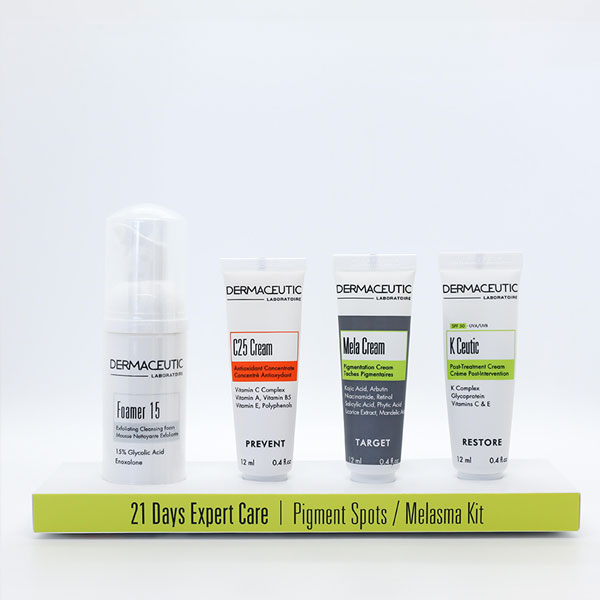Hormones fluctuate in pregnancy. This causes skin changes including acne, facial redness, as well as pigmentation such as melasma. Dermatologists can implement a safe & effective treatment program to reduce acne & prevent scarring.
Acne in pregnancy at a glance
我们的结果不言自明

Before
After

Before
After

Before
After
常见问题
What can you do at home to safely treat acne?
Hormonally driven acne can be challenging to treat at home, especially if lesions are cystic. Here are some things you can try.
AM: Salicylic 2% wash, followed by niacinamide.
PM: Salicylic 2% wash, followed by either azelaic acid or 5% benzoyl peroxide gel.
This program often takes 4-8 weeks before you see improvements.
Can you use retinol if you are pregnant?
The official standing is no, this includes all forms of retinol such as retinoic acid, adapalene, trifarotene, hydroxy pinacolone retinoate, retinaldehyde, and retinyl palmitate.
This is because at super high levels, oral retinoids can cause birth defects. The industry has taken a blanket cover to include topical vitamin A, bearing in mind the chances of birth defects are very low.
What can we do?
A dermatologist’s job is to find effective and safe solutions to difficult problems, and acne related pregnancy is one of them. Solutions for this difficult time include-
- A customised skin care routine during pregnancy
- Safe prescription topicals and anti-inflammatory meds
- Effective LED and laser treatments
- A scar prevention program
Dermatologists provide a clear treatment plan to address acne during pregnancy, in the lactation period & in the future.
What types of light & LED therapies do we perform?
Cutis Dermatology has clinical grade LEDs. These are more effective than normal skin clinics. Phototherapy is one of the best (and safest) ways to address acne in pregnancy.
Our devices include-
- LED phototherapy with red & blue light
- Vascular lasers including V Beam, as well as 532 lasers
- Blue light BBL & IPL
Are chemical peels safe in pregnancy and lactation?
It depends on the type of chemical and the concentration. The safest peels include AHA or alpha hydroxy acids. Our favourites are lactic and glycolic peels. Low strength salicylic acid is also safe in pregnancy.
Retinoic acid or TCA peels are not conducted in pregnancy, however, can be performed postpartum or when breastfeeding.
A safe & highly effective acne treatment plan in pregnant, conceiving or lactating patients combines naturally anti-inflammatory topicals, phototherapy & fruit acid chemical peels.
What is the safe ingredient list during pregnancy?
The following ingredients and drugs are deemed safe in pregnancy.
Actives- vitamin E, ascorbic acid, niacinamide, hyaluronic acid
Topical- azelaic acid, tea tree oil, clindamycin
Oral- erythromycin
Peels- lactic, citric, mandelic & glycolic acids
What other things can you do to help reduce acne outbreaks?
Every little bit counts when treating acne, so don’t forget adjunctive measures such as-
- Good makeup practices, namely removing make up every night, using the correct type of make up and going makeup free for 2-3 days a week.
- Acne diet is underrated. See the section on diet for more information. Reducing your cravings for sugar & processed foods can make a huge difference in acne severity.
- Acne patches promote healing & reduce scarring.
- Natural phototherapy can reduce pimples and outbreaks, however medically prescribed phototherapy is more effective.
How to prevent acne scars?
Scar mitigation is super important. Here are a few steps you can take to reduce acne-related scarring when pregnant.
- Reduce inflammation. Actives such as niacinamide & azelaic acid are useful
- Reduce picking. Form good habits. Patches are great.
- Optimise healing. Hydrocolloid patches are indicated.
- Undertake LED therapy. This can optimise wound recovery, accelerate collagen production & reduce the colour and depth of acne scars.
Book a consultation with our nursing staff to discuss an acne & scar management plan.
What are safe treatments if you are breastfeeding?
This list is different from pregnancy as the risk for the developing foetus is zero. You have a greater selection of active ingredients and treatments. This includes.
- Topical vitamin A including retinoids (still off label but deemed safe)
- Anti-Hormonal medications
- Combination topical and antibiotics
- Some oral anti inflammatory
- PDT and light/laser therapy
- Retinoic acid & high strength salicylic acid peels







